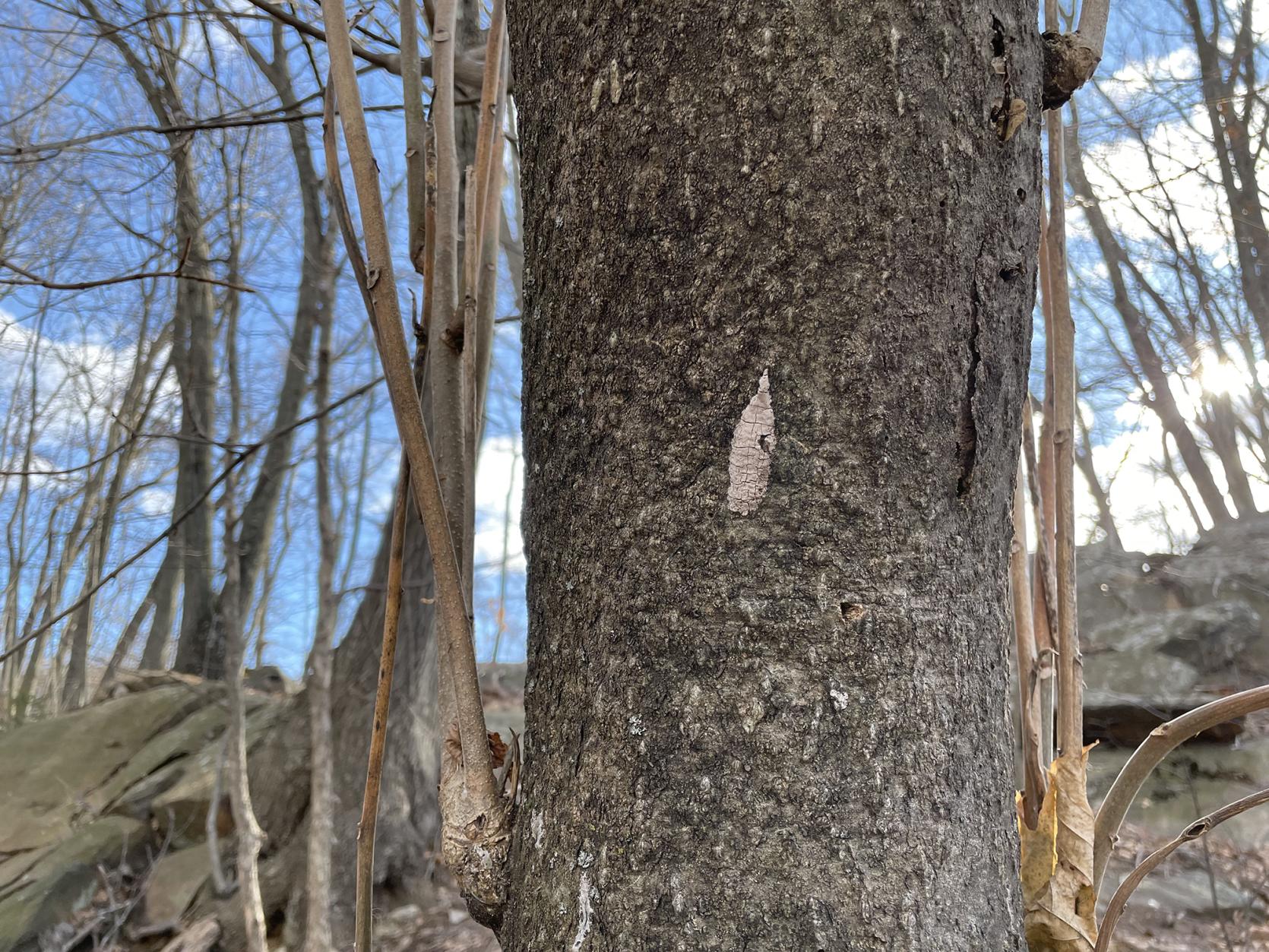- Massachusetts Department of Agricultural Resources
- Executive Office of Energy and Environmental Affairs
Media Contact
Danielle Burney, Deputy Communications Director

BOSTON — In recognition of National Invasive Species Awareness Week, the Massachusetts Department of Agricultural Resources (MDAR) is reminding the public to check for and report any egg masses from the invasive insect known as the spotted lanternfly (SLF). Occurring February 20-26, National Invasive Species Awareness Week (NISAW) calls attention to invasive species, the threat that they pose, and what can be done to prevent their spread. This year, MDAR is using NISAW to highlight the agency’s work detecting and removing spotted lanternfly egg masses.
“Spotted lanternfly is currently one of the top invasive species management priorities for MDAR,” said MDAR Commissioner John Lebeaux. “This invasive pest has caused significant damage to vineyards in states where heavy infestations occur and has shown signs of impacting wild grapes, as well. Because of this, we have tasked survey crews with performing extensive winter surveys of known SLF infestations to locate SLF egg masses and remove any within reach.”
Spotted lanternfly is a sap-feeding insect known to impact vineyards, orchards, and other agricultural commodities in states where it becomes established. SLF not only attacks grapevines, maples, hops, blueberries, and over a hundred other host plants, it also impacts outdoor recreation when the insects swarm in large numbers in late summer and early fall.
This winter, MDAR survey crews have traveled to infested areas in Fitchburg, Springfield, Shrewsbury, and Worcester and have located and removed more than 5,500 SLF egg masses from tree trunks, rocky overhangs, and machinery located near the infestations. The crews remove and destroy any egg masses within reach using scraper cards and use long poles with paint scrapers to extend high into the trees.
In addition to their ongoing survey efforts, MDAR is urging residents in infested areas to check for SLF egg masses and report any discoveries by submitting a photo through their website https://massnrc.org/pests/slf or by emailing slf@mass.gov. The egg masses are beige or gray in color, rectangular, and about an inch and a half long. While they may be found on virtually any flat surface, SLF egg masses are most likely to be spotted on tree bark, fenceposts and other wood products, and rusty metal.
To find out more about National Invasive Species Awareness Week, visit https://www.nisaw.org.
###
